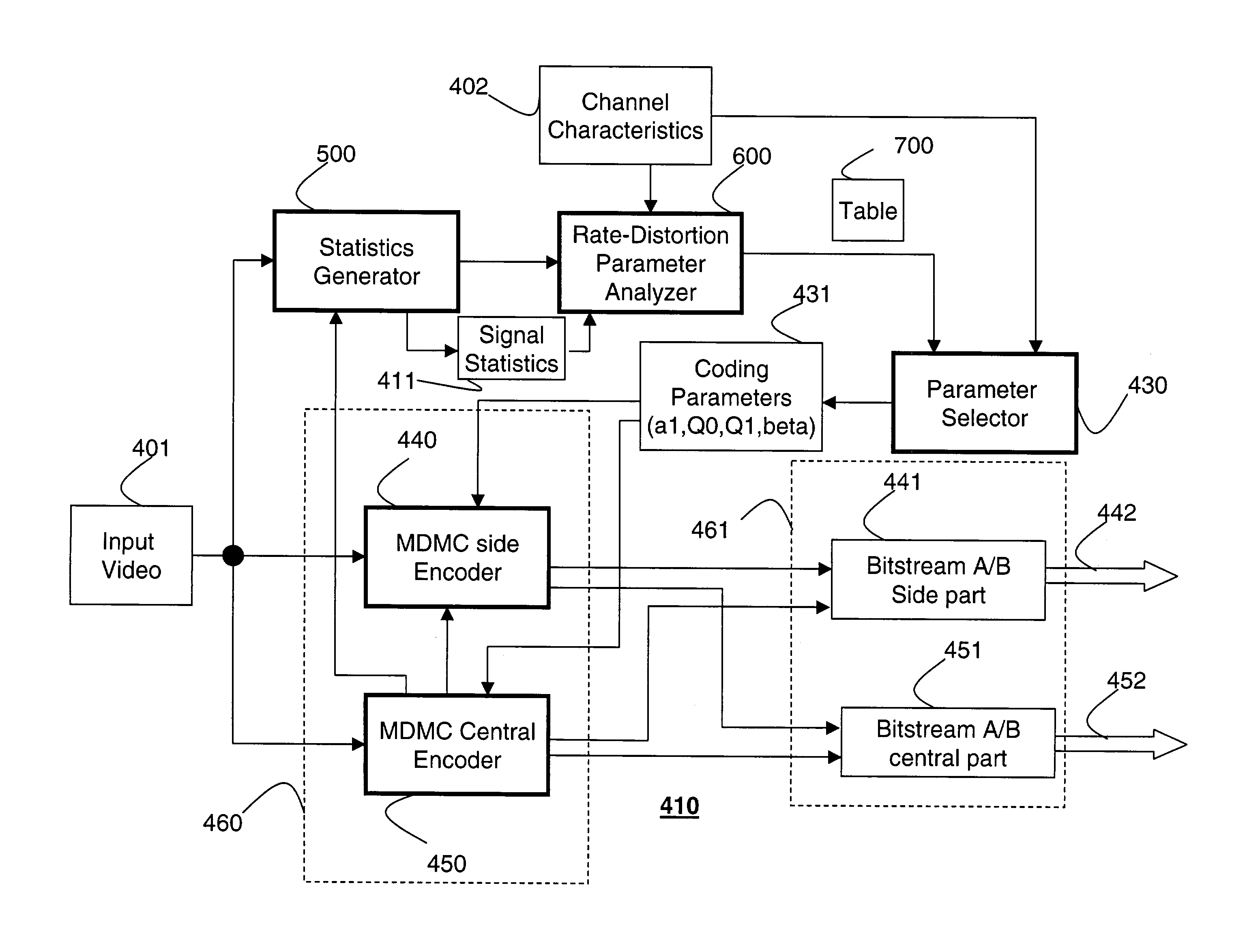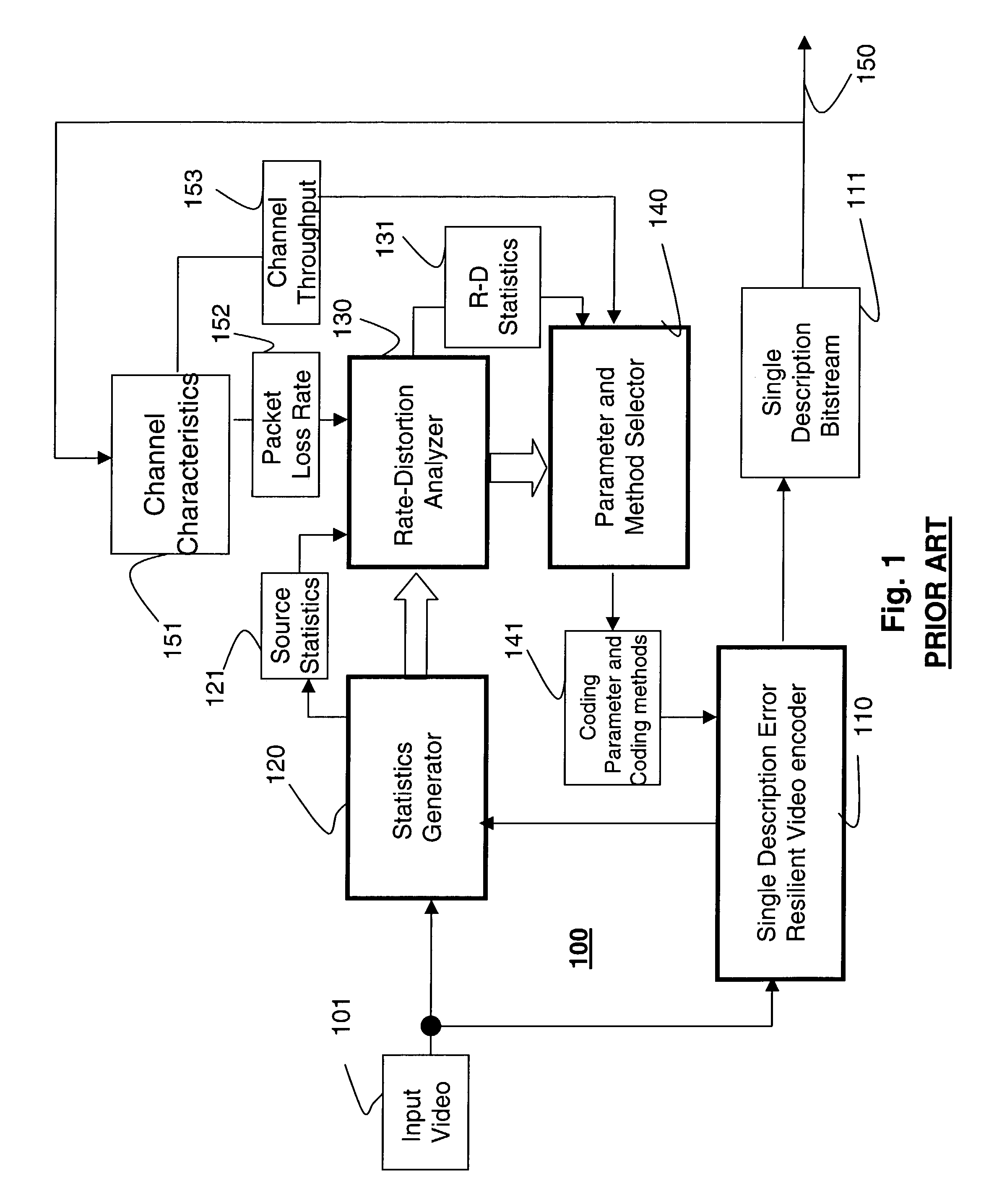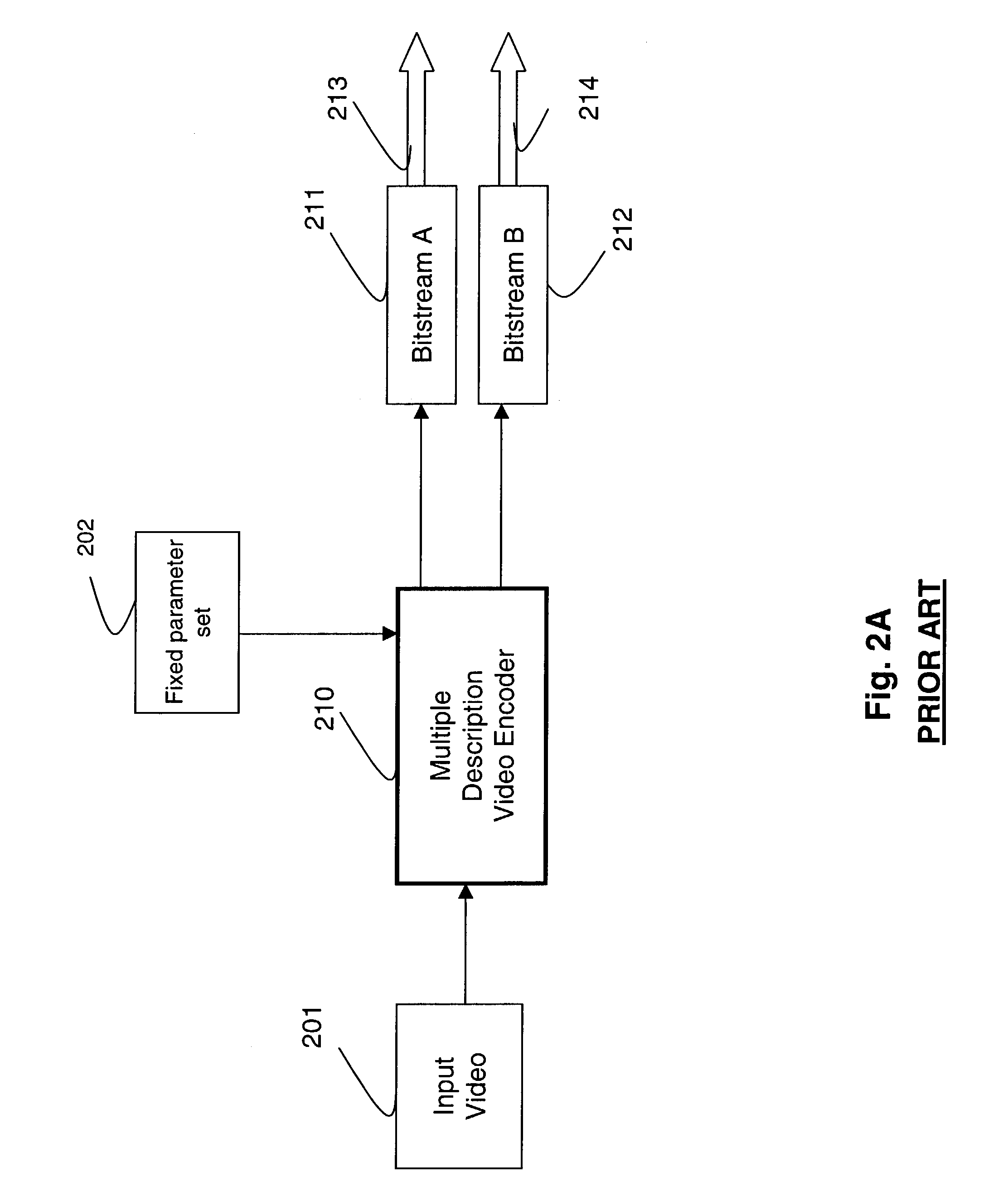Adaptive error-resilient video encoding using multiple description motion compensation
a motion compensation and video encoding technology, applied in the field of video encoding, can solve the problems of severe artifacts in the decoded video, inability to apply streaming video transmission techniques, and extremely sensitive compression video to transmission errors, so as to minimize the distortion of the transmitted video
- Summary
- Abstract
- Description
- Claims
- Application Information
AI Technical Summary
Benefits of technology
Problems solved by technology
Method used
Image
Examples
Embodiment Construction
System Structure
[0053]FIG. 4A shows a method 400 for adaptive multiple description motion compensation encoding according to the invention. A bit rate and an end-to-end distortion (an R-D pair) is estimated 600 for sets of coding parameters 700. The bit rate is based on characteristics of a transmission channel, and the end-to-end distortion is estimated based on signal statistics of a video. A particular set 431 of coding parameters that satisfies an available bit rate of the channel and that minimizes the end-to-end distortion of the video is selected 430. Motion compensated multiple descriptions 461 of frames of the video are encoded 460 according to the selected set of coding parameters. An optimal set 431 is selected for each frame to be encoded.
[0054]As shown in FIG. 4B, an MDMC encoder 410 according to our invention includes a statistic generator 500, a rate-distortion-parameter analyzer 600, an optimal coding parameter selector 430, an MDMC side encoder 440 and an MDMC centr...
PUM
 Login to View More
Login to View More Abstract
Description
Claims
Application Information
 Login to View More
Login to View More - R&D
- Intellectual Property
- Life Sciences
- Materials
- Tech Scout
- Unparalleled Data Quality
- Higher Quality Content
- 60% Fewer Hallucinations
Browse by: Latest US Patents, China's latest patents, Technical Efficacy Thesaurus, Application Domain, Technology Topic, Popular Technical Reports.
© 2025 PatSnap. All rights reserved.Legal|Privacy policy|Modern Slavery Act Transparency Statement|Sitemap|About US| Contact US: help@patsnap.com



